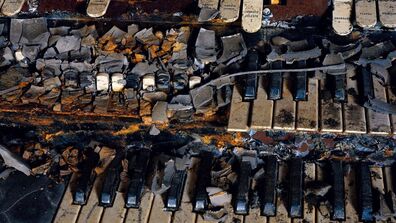
Dread Scott and Ekene Ijeoma Contribute to Op-Ed in The New York Times About the Aftermath of Confederate Statues
Dread Scott (BFA 1989) and AIADO faculty Ekene Ijeoma have contributed to an Op-Ed in The New York Times entitled Monuments for a New Era.
Scott and Ijeoma are two of the six artists invited to "contemplate" the legacy of confederate statues as "markers of our country's racist and violent history” and “what should happen when they are gone," a year after the "Unite the Right" rally in Charlottesville, Virginia. Scott proposes to lay "the upended column across the road," making it "impassable." Accompanying it would be a hole as deep as the height of the erstwhile statue to "create a gaping abyss" with no barriers to prevent people from falling in. This "intentionally inconveniently placed eyesore, disrupting travel and commerce," would force visitors to "confront how slavery and the ideals that maintained and rationalized it continue to stand in our way." Scott would name this "The Legacy of Slavery Is in the Way of Progress and Will Be Until America, Which Benefits From That Legacy, Has Been Replaced With a Completely Different Society." Ijeoma's reimagined monument aims to turn visitors from spectators to participants. The monument would emphasize "healing... through reconciliation," while acknowledging "ongoing manifestations" of a history of slavery and segregation. The double-helix structure will comprise a six-story stone pedestal surrounded by a stairway. The pedestal will be stained rad, yellow, and green, to mark 339 years of slavery, 89 years of segregation and over 60 years of ongoing inequality, respectively.
The proposals are part of a larger, nationwide debate on confederate monuments and addressing and reimagining "the space they take up physically and psychically."
